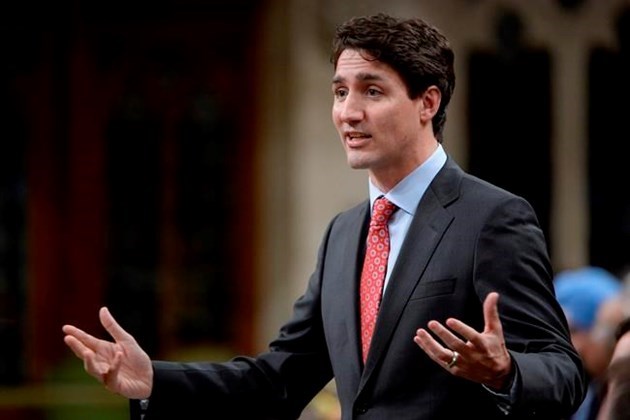The Liberals are promising to reduce Canada’s carbon emissions to net-zero by 2050.
To spur that along, the party has promised that businesses that produce zero emissions technologies will see that taxes cut in half.
The party said it will set clear, legally binding targets to help the country reach the goal. As well, the party will ensure energy sector workers and communities that rely on the energy economy can transition to a new to the future economy.
Read the full text of the news release below.
Liberals move forward to legislate net-zero emissions by 2050
Ottawa, ON — A re-elected Liberal government will immediately commit Canada to net-zero emissions by 2050, and will help workers prepare for the clean energy transition.
Today, Liberal candidates Catherine McKenna, Jonathan Wilkinson, and Steven Guilbeault announced that a re-elected Liberal government would immediately commit Canada to achieving net-zero emissions by mid-century, joining 65 other countries and the European Union that made the pledge at the United Nations Climate Summit on Monday. Net-zero means some sectors could still emit carbon pollution, but these emissions would be offset by other actions — such as planting trees.
“The planet is burning and people are taking to the streets to demand stronger action to fight climate change,” said Liberal candidate from Laurier—Sainte-Marie, Steven Guilbeault. “The science is clear, the evidence is clear and Canadians are clear — we must step up and do even more to protect our environment. Our kids and grandkids are counting on us.”
That’s why a re-elected Liberal government will take concrete steps to lower emissions and make life more affordable for Canadians.
• We will set legally-binding, five-year milestones, based on the advice of the experts and consultations with Canadians, to reach net-zero emissions by 2050;
• We will appoint a group of scientists, economists, and experts to recommend the best path to get to net-zero;
• We will exceed Canada’s 2030 emissions goal; and
• We will ensure energy workers and communities can shape their own futures by introducing a Just Transition Act, giving workers access to the training, support, and new opportunities needed to succeed in the future economy.
“It is time for Canada to join governments and leading businesses around the world that have committed to net zero emissions by 2050 in order to further tackle the worsening climate crisis,” said Liberal candidate from Ottawa-Centre, Catherine McKenna. “We know that the strongest economies and businesses in the future will be those that embrace clean technologies. We will ensure that all Canadian workers are part of this transition to a cleaner, more prosperous and more sustainable future."
These commitments build on the Liberals’ climate record that already includes over 50 measures to cut pollution and protect our environment. These include:
• Banning harmful single-use plastics and microbeads;
• Phasing out coal power by 2030 and investing in renewables like wind and solar;
• Putting a price on carbon pollution so it’s no longer free to pollute anywhere in Canada, while putting more money back into Canadians’ pockets;
• Building 1,200 public transit projects across the country;
• Making zero-emission vehicles more accessible and affordable; and
• Investing in energy efficiency to help families and businesses save money.
"Climate change represents an existential threat, but also an economic opportunity for countries that foster technologies that address greenhouse gas emissions,” said Jonathan Wilkinson, the Liberal candidate for North Vancouver. “We are committed to addressing this threat. Andrew Scheer, on the other hand, will do less and cost Canadians more in a plan that experts say will increase carbon pollution. We must do better."
